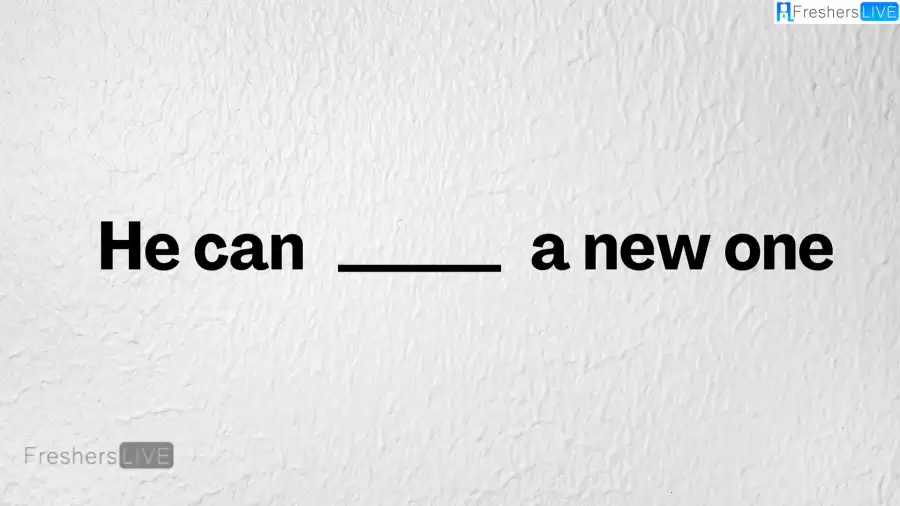Test Your Grammar Skills With These 3 Questions in This Puzzle
by T Santhosh
Updated Sep 29, 2023

Test Your Grammar Skills With These 3 Questions in This Puzzle
Discover the world of grammar puzzles. These puzzles make you use your grammar skills and creative thinking. They keep your mind active and might even help you feel less stressed. There are lots of different grammar challenges to enjoy, including the ones we'll talk about next.
This challenge can be a bit tricky and is great for people who are really good at grammar and notice small details. When you become really good at this kind of puzzle, it's not just about having fun – it gives you skills that can be helpful in many parts of your life. Even though the puzzle might seem hard at first, your goal is to find a solution that follows the grammar rules perfectly and reveals the secrets of the puzzle. In the next section, we'll explain this grammar puzzle in detail and show you how to solve it.
1. He can _____ a new one
The word "buy" is used in the sentence "He can buy a new one" to show that someone has the ability or permission to purchase a new item. In this case, it's used to indicate that he has the option to get a new one. In English, when we want to express that someone is capable of doing something or has the choice to do it, we often use verbs like "can." By using "can buy," it tells us that he has the capacity to go out and purchase a new item if he wants to. This construction is commonly used to discuss options or choices that someone has.

2. The test _____ much later
The word "began" is used in the sentence "The test began much later" to indicate when an action, in this case, the start of the test, took place in the past. In English, the past tense is used to talk about things that happened before the current moment. When we use "began" in the past tense, it tells us that the test's starting point occurred in the past. This is a common way to discuss actions or events that have already happened. So, when you say, "The test began much later," you are explaining that the test started at a time that was not early but instead some time ago. "Began" is the grammar rule used to describe this action in the past.

3. She _____ all the points
The word "found" is used in the sentence "She found all the points" to indicate that she successfully discovered or located all of the points she was looking for. In English, the word "found" is the past tense form of the verb "find," and it's used to talk about actions or events that happened in the past. When we use "found" in the past tense, it tells us that the action of locating or discovering the points happened before the current moment. "Found" is the grammar rule used to express this action that happened earlier.

Calculate the Outcome of 168 ÷ 14 + 6 x 3 - 15 ÷ 3=?
To determine the answer, follow the order of operations. Start with the divisions and multiplications from left to right: 168 ÷ 14 equals 12, and 15 ÷ 3 equals 5. Now the equation becomes 12 + 6 x 3 - 5. Next, perform the multiplications and additions/subtractions from left to right: 6 x 3 equals 18, and 12 + 18 equals 30. Therefore, the solution is 30.
Ready to challenge your intellect and enhance your cognitive abilities? Explore our diverse range of Brain Teaser, IQ tests, and mesmerizing visual challenges on Fresherslive, where you can unlock your hidden potential!
Determine the Result of 132 ÷ 11 + 8 x 2 - 14 ÷ 2=?
Stick to the order of operations as usual. Begin with the divisions and multiplications from left to right: 132 ÷ 11 equals 12, and 14 ÷ 2 equals 7. Now the equation becomes 12 + 8 x 2 - 7. Next, perform the multiplications and additions/subtractions from left to right: 8 x 2 equals 16, and 12 + 16 equals 28. Thus, the solution is 28.
Test Your Grammar Skills With These 3 Questions in This Puzzle FAQs
Grammar puzzles are challenges that test your understanding of grammar rules through word or sentence manipulation.







